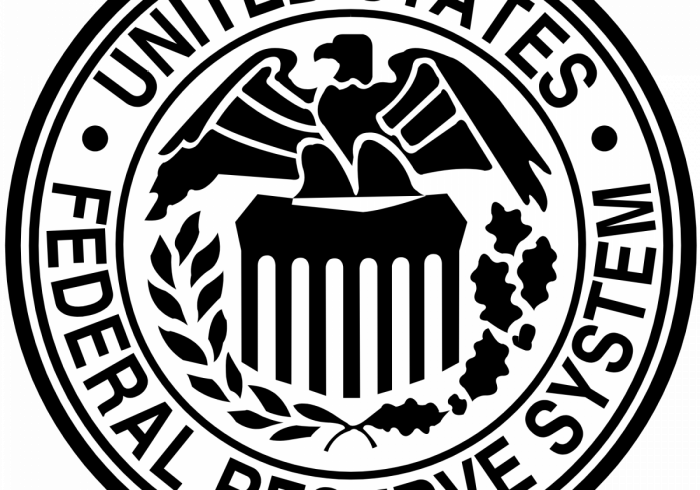Welcome to the 17th Annual Community Bankers Conference. We are very glad that so many of you from community banks in the Second District joined us today for our conference about what’s “On the Horizon for Community Banks.” I am also pleased to welcome my colleagues from other regulatory agencies, including Doreen Eberley from the FDIC, who is our keynote speaker.
Before proceeding, let me emphasize that my remarks are my own and do not necessarily reflect those of the Federal Reserve Bank of New York or the Federal Reserve System.1
It has been more than 10 years since the financial crisis, and over that time we have seen the industry change in material ways. Ten years ago there were 7,479 community banks nationwide. Today that number is 5,320, a 29% decline. Some of this decline was due to failure, and some through consolidation or acquisition. Your financial institutions remain today as a result of prudent risk management practices, resiliency, and the ability to successfully weather those stormy years.
Today, the data show, on average, strong metrics for the balance sheets of community banks in the Second District. The quality of loans has improved due to more prudent underwriting and capital levels appropriately support the risk profile. As of 4Q 2018 on average, Second District ratios were slightly above the national peer average for tier 1 and total risk-based capital ratios. In terms of profitability, return on average assets was 0.95% in 2018 for community banks in the Second District, only slightly trailing the national average of 1.1% for all community banks.

Another relevant metric is the more diversified loan mix on the balance sheets of community banks. Commercial Real Estate (CRE) is a major source of asset growth, and in our geography, real estate continues to be in high demand and continues to outperform certain parts of the country. For example, in the Second District non-owner occupied CRE concentration remains higher than the national peer average. Our examiners, however, have noted more robust risk management practices and oversight, and commensurate levels of capital as mentioned earlier.
As supervisors, we will continue to stress to the region’s bankers that a financial institution’s decision to assume certain types of risk is a decision for the Board of Directors and senior management. Also, as supervisors, we will continue to expect to see the appropriate level of risk management in place to manage and mitigate the risks assumed. This means having the appropriate expertise on the management team, robust information systems and technologies to monitor and manage those risks, proper controls and oversight, reasonable limits, and an action plan to take corrective measures when necessary. All business decisions have risks and there must be mitigating strategies in place to manage adverse occurrences.
Hearing your input and perspectives on these issues is an important part of the process for us, and I am fortunate to have the opportunity to meet with many community bankers in the Second District. Some of the most common themes I hear include: an appreciation for the recent regulatory reforms implemented such as the streamlining of the Call Report; the extension of the examination cycle to 18-month for firms under $3 billion in total asset-size; and the current discussions around capital simplification. The comment period on capital simplification will close on April 9th, and I hope you all shared input to influence that important policy decision.
One area where we receive mixed feedback from bankers is the issue of off-site examinations. Some bankers love that idea, while others have stated they like the face-to-face interaction as it reduces the risk of miscommunication, misinterpretations or ambiguities. Still others prefer a hybrid approach with certain portions of examination work conducted on-site and others off-site. All felt critical meetings should be conducted in person. Today’s technology makes all of these options possible, and we will continue to exercise judgment and thoughtful communication with bankers to determine the best option. At the end of the day, our shared goal is a fair and accurate assessment for your institution, and we will continue to work together to accomplish this.
Turning to today’s conference theme of “On the Horizon for Community Banking,” I have a few observations that I’d like to share. These observations, in part, preview the day’s agenda and I look forward to the continued conversation on these important issues.
First, our country and the banking industry have benefitted from steady economic growth, modest inflation, and low unemployment in recent years. These are all positive and welcome outcome, but not all regions have benefitted equally here in the Second District. Some portions of upstate New York have benefitted from an influx of technology companies and other industries, while other regions remain challenged due to a lack of population growth. Later today we will hear from two of our economists who will share national and regional economic trends.
Also in the spirit of looking forward, I can share some views on what community bankers can expect from the supervisory process. Examiners are keenly focused on emerging trends around funding costs and liquidity risks. Bankers consistently share with us the challenge of raising core deposits to fund loan growth. Community banks compete not only with other community banks for deposits, but also with credit unions and larger institutions. And, these larger counterparts are actively courting customers through direct mailers and offering competitive rates. Data in the Second District show cost across most deposit categories have increased with a slight uptick in the higher cost funding sources such as borrowings. Data for the largest banks exhibit a comparable trend, but they control a larger market share.
I expect another area of focus during the examination process will be interest rate risk and related challenges. Bankers have shared with us that customers are demanding higher rates on deposits, yet those same customers are reluctant to pay higher rates on their loans. What is a banker to do in trying to maintain a productive, long-term relationship? We are seeing signs of lower net interest margins (NIM), where the average NIM in the Second District is 3.47 percent compared to the national peer average of 3.71 percent.
Examiners will be reviewing initiatives by community bankers to partner with “fintech” firms. We know there is competition from non-bank providers who have the capacity to provide automated loan pre-approvals in minutes and loan closings within days after approval. Today, you will hear from a panel of your peers on how fintech is changing the way their firms do business, and how they mitigate the risks associated with outsourcing. In my view, new innovations from the fintech space have the potential to fundamentally transform the provision of financial services. As I’ve said elsewhere, this disruption brings both opportunity and risks and that need to be managed.2
A third forward-looking topic is the coming implementation of accounting changes for reserves, known as the “current expected credit loss” approach or CECL. One of our colleagues from the Board of Governors will join us later to address a common question raised by our bankers on the challenge of gathering loss data in a historically low loan loss environment.
We will also discuss the challenges you share around keeping abreast of consumer compliance requirements. During today’s luncheon, our head of consumer compliance will share remarks on recent enhancements to the examination process.
I’d like to close with a few words about a specific topic that is core to the community bank business model, namely attracting new customers and growing deposits. I believe success in the area will be increasingly linked to a willingness to invest in technology and new processes. Customers today seem to prefer online banking, and millennials favor alternative banking options. This suggests both an opportunity and a strategic imperative. There may be no better time than now to reimagine transformation through investments in innovation, improved multi-channel delivery, more fintech partnerships, and expansion of digital payments. Technologies to enable transformation are more powerful, readily accessible, easily implementable, and economical than ever before. Of course, these new activities bring risk management and legal issues and challenges to consider-vendor management, data privacy, consumer protection and cybersecurity to name just a few.
To conclude, and again to echo the “on the horizon” theme of the conference, I believe we all need to be mindful of this new financial landscape as community banks strive to retain control of the customer experience. This is critical to the relationship-based business model of many community banks and reflects the unique local knowledge of the market and customer needs. As the industry evolves, this poses some challenges but also opportunities. This is new territory for us all and I expect it will be part of the ongoing supervisory dialogue in the years ahead.
Thank you for your attention and for joining us today at the New York. I will be available during today’s lunch session to discuss further, and I hope you enjoy today’s conference












